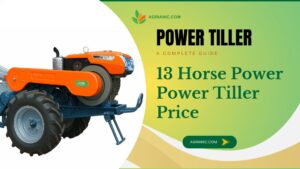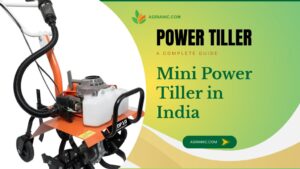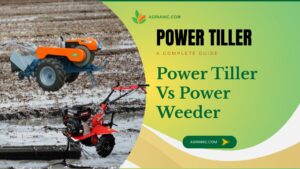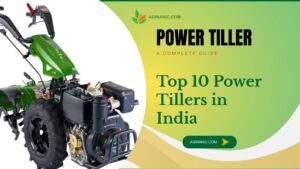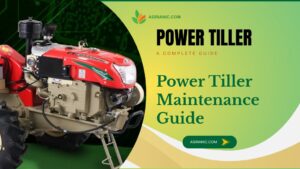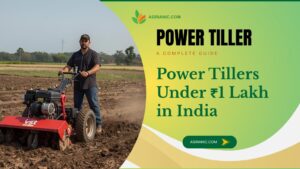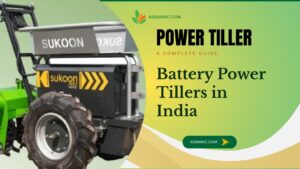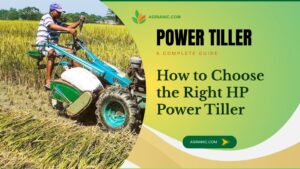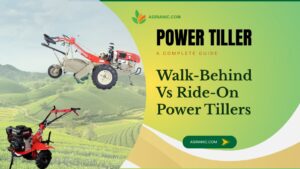Power Tiller Attachments & Implements in India (2025 Guide)
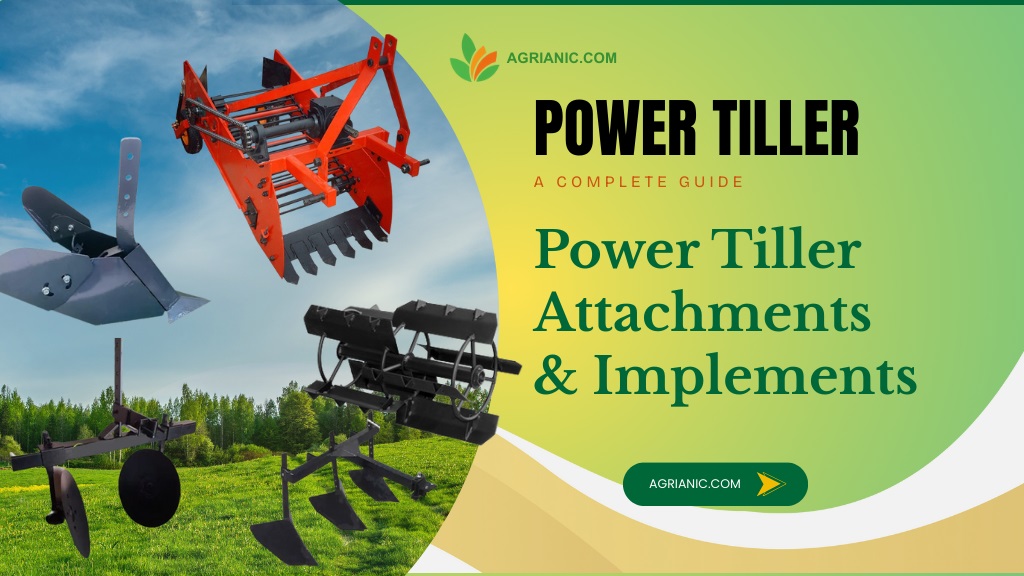
Power tillers become far more useful when fitted with the right attachments and implements. For Indian farmers, attachments convert a single machine into a multi-purpose workhorse – from puddling and ridging to seeding and weeding. This guide lists the common attachments, their uses, compatibility notes, approximate price ranges (2025), maintenance tips, and buying advice so you can choose the right tools for your farm.
Why attachments matter
- Turn a single tiller into multiple machines (weeder, ridger, puddler, trailer).
- Reduce manual labour and speed up operations between crops.
- Lower overall cost compared with buying separate machines for each task.
- Increase utilisation of your tiller across seasons – better ROI.
Common Power Tiller Attachments & Their Uses
| Attachment | Main Use | Suitable Crops / Conditions | Typical Price Range (₹, 2025) |
|---|---|---|---|
| Rotavator / Tines | Primary tillage and soil pulverising | Vegetables, cereals, seedbed prep | ₹6,000 – ₹18,000 |
| Ridger | Make ridges for tuber crops and vegetables | Potato, onion, sugarcane | ₹4,000 – ₹12,000 |
| Puddler / Puddling Kit | Prepare paddy fields and create a puddled layer | Rice paddies (wetland) | ₹8,000 – ₹20,000 |
| Power Weeder / Weeding Blade | Inter-row weeding and shallow cultivation | Vegetables, sugarcane, orchards | ₹3,000 – ₹10,000 |
| Seeder / Seed Drill | Precision seeding and spacing | Cereals, pulses, vegetable seeds | ₹8,000 – ₹25,000 |
| Trailer / Trolley | Transport of inputs/harvest (300–800 kg) | All farms for material handling | ₹10,000 – ₹35,000 |
| Furrower / Plough | Deep furrowing and primary ploughing | Field preparation for row crops | ₹4,000 – ₹15,000 |
| Mulcher / Mower | Cutting and mulching cover crops or grass | Orchards, pastures, and inter-row management | ₹10,000 – ₹30,000 |
| Potato Digger | Lift tubers from the soil for harvesting | Potato cultivation | ₹12,000 – ₹35,000 |
Note: Price ranges are indicative for 2025 and vary by brand, quality, and region. Always check with local dealers for exact on-road prices and compatibility.
Compatibility & Mounting – what to check
- HP Rating: Ensure the attachment is rated for your tiller’s HP. Heavy implements need higher torque and might not work on smaller tillers.
- Mount Type: Check whether the tiller uses a specific coupling (splined shaft, flange, quick hitch). Some attachments are universal; others need model-specific mounts.
- PTO Speed & Direction: Confirm power take-off (PTO) speed and rotation direction match the implement requirements.
- Weight & Balance: Heavier attachments affect manoeuvrability and may require ballast or counterweights.
- Hydraulic vs Mechanical: Most mini and small tillers use mechanical linkages; some larger attachments may need hydraulic hookups (check your model).
How attachments affect performance & productivity
Using the right implement improves task efficiency dramatically. For example:
- A rotavator prepares a seedbed in 20–40% of the time of manual tillage.
- A puddler for paddy reduces labour and gives a more even puddled layer than manual methods.
- A seeder improves germination consistency and reduces seed wastage compared with broadcasting.
Buying Checklist – select attachments smartly
- Purchase attachments from the tiller brand or verified third-party manufacturers that offer compatibility guarantees.
- Prioritise implements you will use every season (ridger, rotavator, weeder) rather than one-off tools.
- Check warranty and spare-part support – implements must be serviceable locally.
- Ask the dealer for a demo or video of the attachment working in similar soil to yours.
- Consider second-hand attachments for expensive tools like trailers or potato diggers – but inspect for wear.
Maintenance & Storage Tips for Attachments
- Clean implements after every use to remove soil and crop residues; moisture speeds corrosion.
- Grease moving parts and check fasteners before each season.
- Sharpen blades/tines periodically; worn tines reduce efficiency and increase fuel use.
- Store attachments under cover or in a dry shed to extend life.
- Keep a small inventory of common bolts, bearings, and tines for quick repairs.
Cost-Benefit: Are Attachments Worth the Investment?
Translated into productivity, well-chosen attachments usually pay back within 1–3 cropping seasons for small farms. Example benefits:
- Reduced hired labour costs for weeding, puddling, and tilling.
- Improved crop establishment with seeders and rotavators – better yields.
- Greater utilisation of a single tiller across multiple operations increases ROI.
Where to buy attachments in India
Attachments are available from authorised tiller dealers, specialised implement manufacturers, and online agricultural marketplaces. On Agrianic, you can compare makes and locate dealers that supply compatible implements for your tiller model.
👉 Browse Power Tiller Attachments on Agrianic
Real-world examples (practical combos)
- Vegetable farmer (0.5–1 acre): Rotavator + Weeder + Seeder – quick seedbed prep and inter-row cultivation.
- Paddy farmer (1–3 acres): Puddler + Trailer – efficient puddling and easy transport of seedlings and inputs.
- Potato grower: Ridger + Potato Digger + Trailer – ridge formation, harvesting, and transport in one workflow.
Subsidy & Government Support for Attachments
Some state mechanization programs include subsidies or incentives for implements (especially rotavators, seeders, and puddling equipment). Check with your state agriculture department or local Krishi Vigyan Kendra (KVK) for current schemes. Aggregators and farmer groups sometimes get special rates under group purchase programs.
Common mistakes to avoid
- Buying an implement that is not rated for your tiller HP leads to damage and poor results.
- Prioritising too many attachments at once – buy the most used ones first.
- Skipping dealer demos – always see the implement working before purchase.
- Ignoring spare-part availability leads to long downtimes during peak season.
Frequently Asked Questions (FAQs)
Q. Can I use any attachment with any power tiller?
A. Not always. Some attachments are universal, but many require specific mounting types, PTO speeds, or HP ratings. Always confirm compatibility with your tiller model.
Q. How much does a good rotavator cost?
A. In 2025, a typical rotavator for small/medium tillers ranges from around ₹6,000 to ₹18,000, depending on size and build quality.
Q. Which attachments should I buy first?
A. Start with implements you will use each season: rotavator/tines, ridger (if you grow tubers), and a weeder. Add seeders or potato diggers as your needs grow.
Q. Are attachments eligible for subsidy?
A. In many states, yes, especially for rotavators, seeders, and puddling kits. Subsidy availability and percentage vary by state and farmer category; check locally.
Further reading
Choosing the right attachments multiplies the usefulness of your power tiller. Focus on compatibility, serviceability, and the implements you will use repeatedly – that’s how you maximise productivity while controlling costs.
Get Prices from Verified Power Tiller Sellers Near You
We connect you with trusted and verified sellers near you. Get the best deals, fast and hassle-free!
Popular Products from Verified Sellers
No products found for this category.


